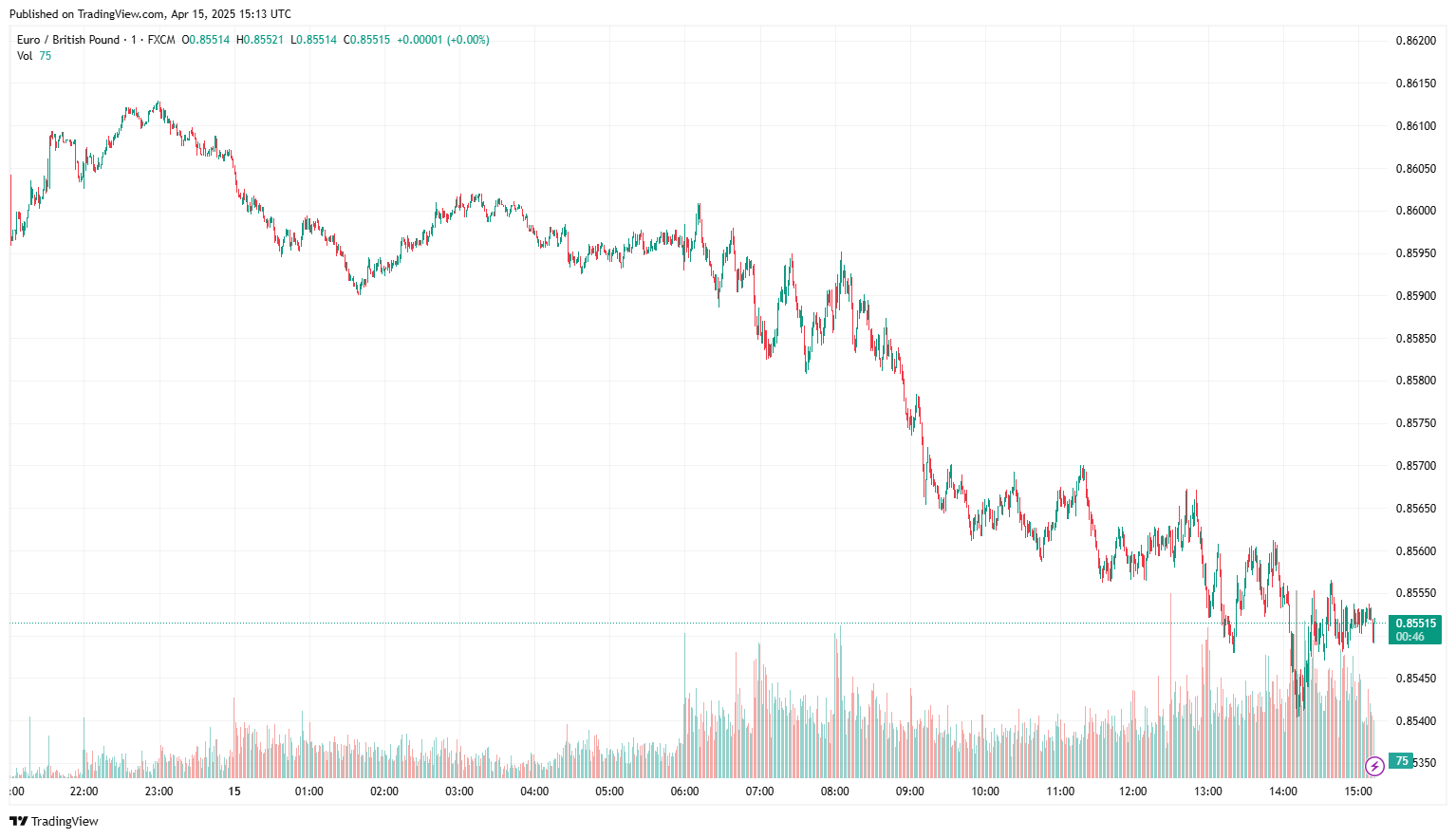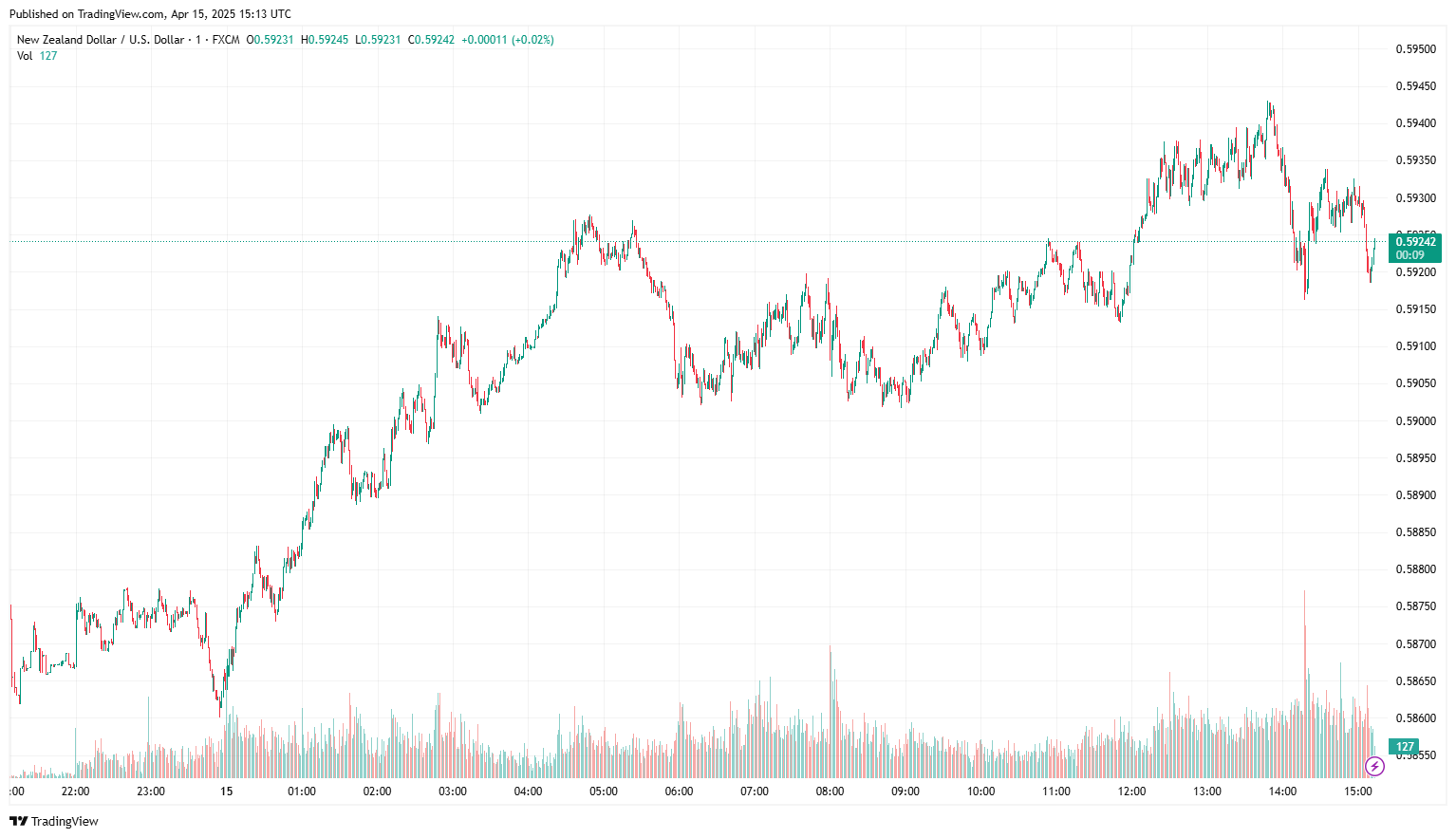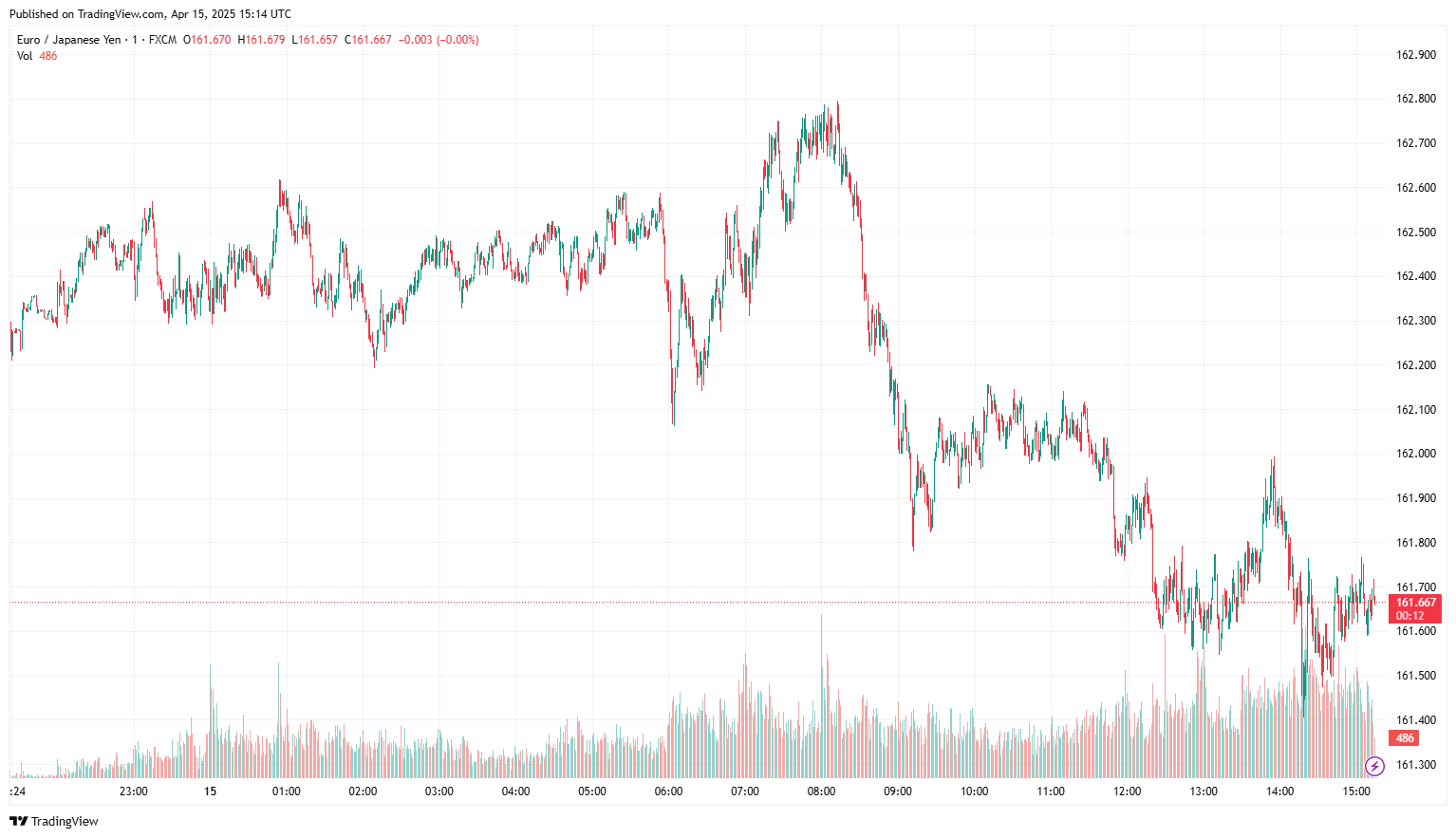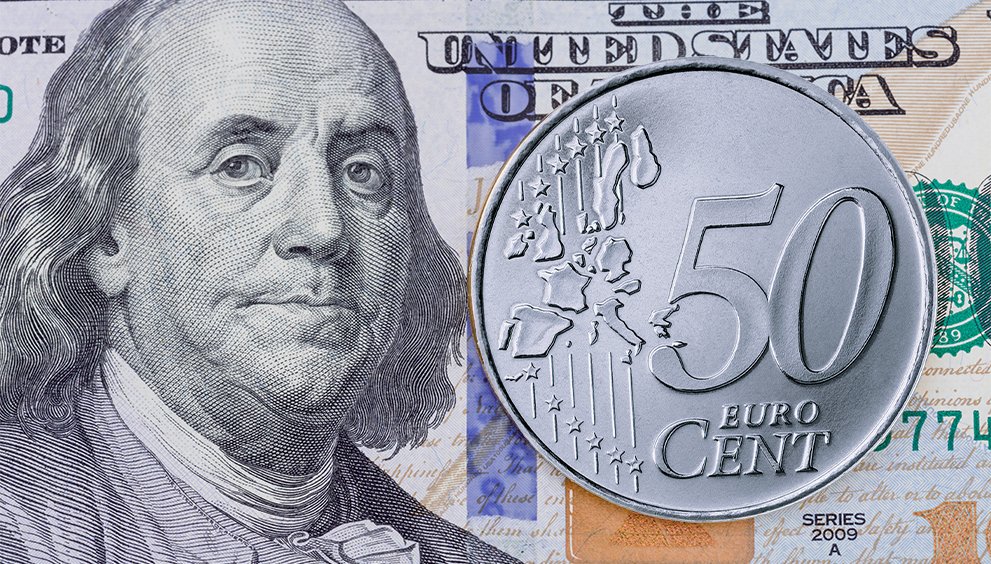EUR/GBP Sinks Following Upbeat UK Employment Data

EUR/GBP fell to around 0.8590 as the robust UK employment data supported the sterling. On Tuesday, the Office for National Statistics (ONS) reported that the ILO Unemployment Rate remained steady at 4.4% in the three months to February, matching the market forecast. Additional details in the report revealed that the number of people claiming jobless benefits increased by 18.7K in February, compared to a revised gain of 16.5K in January, exceeding the expected 30.3K figure. The Employment Change data for February was reported at 205K, up from 144K in January. Meanwhile, Average Earnings, excluding Bonuses, in the UK rose 5.9% year-on-year (YoY) for three months in February, compared to a revised 5.8% growth reported previously. Markets anticipated a 6% figure. Another measure of wage inflation, Average Earnings, including Bonuses, increased by 5.6% during the same period after rising by a revised 5.6% in the quarter ending in February. This data surpassed the estimate of 5.7%. The mixed Average Earnings data is unlikely to shift the current market anticipation surrounding the Bank of England’s (BoE) monetary policy outlook, affecting the central bank’s decision in the May policy meeting. Market participants will pay close attention to UK Consumer Price Index (CPI) inflation figures for more insights into the BoE’s policy stance and the impact of Trump’s tariffs. Headline UK CPI inflation is predicted to tick lower to 2.7% YoY from the previous period’s 2.8%, while core CPI inflation is expected to remain at 3.5% YoY.
On the other hand, investors are bracing for the European Central Bank’s (ECB) Bank Lending Survey (BLS), looking forward to any key insights into the ECB’s assessment of monetary and economic conditions before Thursday’s policy meeting. While the market anticipates a 25 bps rate reduction, the ECB may maintain the same interest rate. In an interview with Handelsblatt on Saturday, German Chancellor-in-waiting Friedrich Merz expressed his worries about Trump’s economic approach. He warned, “President Trump’s policies heighten the likelihood that the next financial crisis could arrive sooner than anticipated.” Merz further proposed the establishment of a new transatlantic trade agreement, suggesting, “Zero percent tariffs on all goods would benefit both parties.”
In the upcoming sessions, investors will monitor consumer inflation figures and the European Central Bank’s (ECB) interest rate decision to gain further insights into EUR/GBP movements.

NZD/USD Climbs Amid Upbeat Risk Sentiment
NZD/USD edged higher to 0.5909 due to bearish market sentiment around the US dollar. The USD Index (DXY), a measure that tracks the greenback against a basket of currencies, continued its downward momentum amid concerns over the potential economic fallout due to the escalation of the US-China trade war. On Friday, China imposed a 125% retaliatory tariff in response to Trump’s decision to raise duties on Chinese goods to an unprecedented 145%. China’s trade surplus, measured in yuan, surged to CNY 736.72 billion from CNY 122 billion in February. In USD terms, the surplus climbed to $102.6 billion, surpassing the $77 billion forecast; however, it slightly fell from the previous $170.51 billion. Exports increased by 13.5% year-on-year, up from February’s 3.4%, while imports declined by 3.5%, a smaller decrease than the prior 7.3% drop. While China’s General Administration of Customs noted that the global economic outlook carries challenges, it also assured an optimistic approach via a report that foreign trade has shown both quantitative and qualitative growth.
On the domestic front, the Food Price Index (FPI) increased by 0.5% month-on-month in March, recovering from a 0.5% decline in February. On an annual basis, food prices advanced by 3.5%, up from 2.4% in the previous month, marking the highest annual rate since January 2024. Business NZ Performance of Services Index (PSI) printed at 49.1, indicating a slight contraction, slightly above February’s 49.0. Additionally, Trump’s recent announcement hinted at the marginal tariffs on Chinese imports, especially for semiconductors and electronics, supporting the Kiwi. He also suggested that these goods would remain subject to the current 20% tariffs related to fentanyl rather than the previously recommended 145% duties, which could further support the Kiwi.
On the other hand, rising concerns over a tariffs-driven US economic slowdown could impact the Fed’s monetary policy outlook in 2025, weighing on the greenback. While Trump’s 90-day tariff pause improved market sentiment around the greenback, Trump’s social media activity continues to reignite confusion over trade policy.
In today’s session, Empire State Manufacturing Index data and persistent global trade concerns will drive the NZD/USD exchange rate.

GBP/USD Buoyed by Mixed Tariff Messages
GBP/USD rose to 1.3221, as robust employment data supports the pound. The ILO unemployment rate remained steady at 4.4% for the three months ending in February, which is in line with market forecasts. Additional details in the report indicated that the number of people claiming jobless benefits rose by 18.7K in February, compared to a revised increase of 16.5K in January, surpassing the expected 30.3K figure. The Employment Change data for February was recorded at 205K, an increase from 144K in January. Meanwhile, Average Earnings, excluding Bonuses, in the UK rose by 5.9% year-on-year (YoY) for the three months ending in February, compared to a revised growth of 5.8% reported previously. Markets had anticipated a 6% figure. Another measure of wage inflation, Average Earnings, including Bonuses, increased by 5.6% during the same period after a revised increase of 5.6% in the quarter ending in February. This data exceeded the estimate of 5.7%. While the mixed Average Earnings data failed to significantly shift the current Bank of England’s (BoE) monetary policy outlook, investors are eyeing the upcoming March UK Consumer Price Index (CPI) data.
On the greenback front, ongoing concerns about potential economic fallout continue to fuel speculation that the Federal Reserve (Fed) may resume its rate-cutting cycle. The University of Michigan’s Consumer Sentiment Index fell to 50.8 in April, while one-year inflation expectations increased to 6.7%. In terms of inflation, the US Producer Price Index (PPI) rose 2.7% year-on-year in March, down from 3.2% in February. Core inflation also slowed to 3.3%. Meanwhile, initial jobless claims rose to 223,000, although continuing claims decreased to 1.85 million, presenting a mixed picture of the labour market. On Monday, Fed Governor Christopher Waller supported easing monetary policy during an economic recession despite persistent inflationary pressures. “I expect the risk of recession to outweigh the risk of escalating inflation, especially if the effects of tariffs in raising inflation are expected to be short-lived,” Waller stated. Separately, Atlanta Fed President Raphael Bostic noted that we still have significant progress to make on inflation, as tariffs could put upward pressure on prices. Bostic added that the Fed cannot make bold moves in either direction. On Monday, Donald Trump indicated that he is considering temporary exemptions for tariffs on imported vehicles and related parts, as domestic Original Equipment Manufacturers (OEMs) require more time to establish manufacturing facilities at home. “I’m looking at something to help car companies with it,” Trump also added, “They’re switching to parts that were made in Canada, Mexico, and other places, and they need a little bit of time because they’re going to make them here.”
In today’s session, Empire State Manufacturing Index numbers and the UK’s employment data will shape the market sentiment around the GBP/USD exchange rate.

EUR/JPY struggles amid a positive risk tone
EUR/JPY hovered near 162.42 as the upbeat market mood reduced safe-haven demand, weighing on the yen. However, optimism over a potential US-Japan trade deal and an escalating US-China trade war may underpin the Japanese yen. On Monday, Japanese Prime Minister Shigeru Ishiba warned that “US tariffs have the potential to disrupt the world economic order.” Japan’s Finance Minister Shunichi Kato stated, “The US and Japan share the perspective that excessive FX volatility is undesirable.” Furthermore, Japan’s Economy Minister Ryosei Akazawa remarked that “the FX issues will be dealt with between Finance Minister Kato and US Treasury Secretary Scott Bessent.” Regarding monetary policy, Thursday’s Bank of Japan preliminary report revealed that annual wholesale inflation accelerated to 4.2% in March, indicating cooling inflationary pressure. Easing inflation and strong wage growth could impact the market anticipation that the Bank of Japan (BoJ) will continue raising interest rates in 2025.
Conversely, investors are preparing for the European Central Bank’s (ECB) Bank Lending Survey (BLS), eager for significant insights regarding the ECB’s evaluation of monetary and economic conditions ahead of Thursday’s policy meeting. Although the market expects a 25 bps rate cut, the ECB might opt to keep the interest rate unchanged. On the data front, the Eurozone’s industrial sector activity grew more than expected in February. Industrial output in the continent rose by 1.1% month-over-month (MoM) in February, surpassing the estimated growth of 0.2% and January’s reported increase of 0.8%. Annually, Eurozone Industrial Production jumped 1.2% in the same period, compared to January’s -0.5%. The data surprised markets to the upside, as a -0.8% reading was predicted. The headline German ZEW Economic Sentiment Index declined sharply to -14 in April, down from 51.6 in March, missing the market estimate of 9.3 by a wide margin. The Current Situation Index improved to -81.2 in the same period, compared to the March reading of -87.6, beating the expected figure of -86. The Eurozone ZEW Economic Sentiment Index dropped to -18.5 in April from 39.8 in March, while the market consensus was 14.2.
In the upcoming sessions, the European Central Bank’s (ECB) interest rate decision, Japanese Trade Balance and National Core CPI data will drive the EUR/JPY movements.



 English
English 



























































































